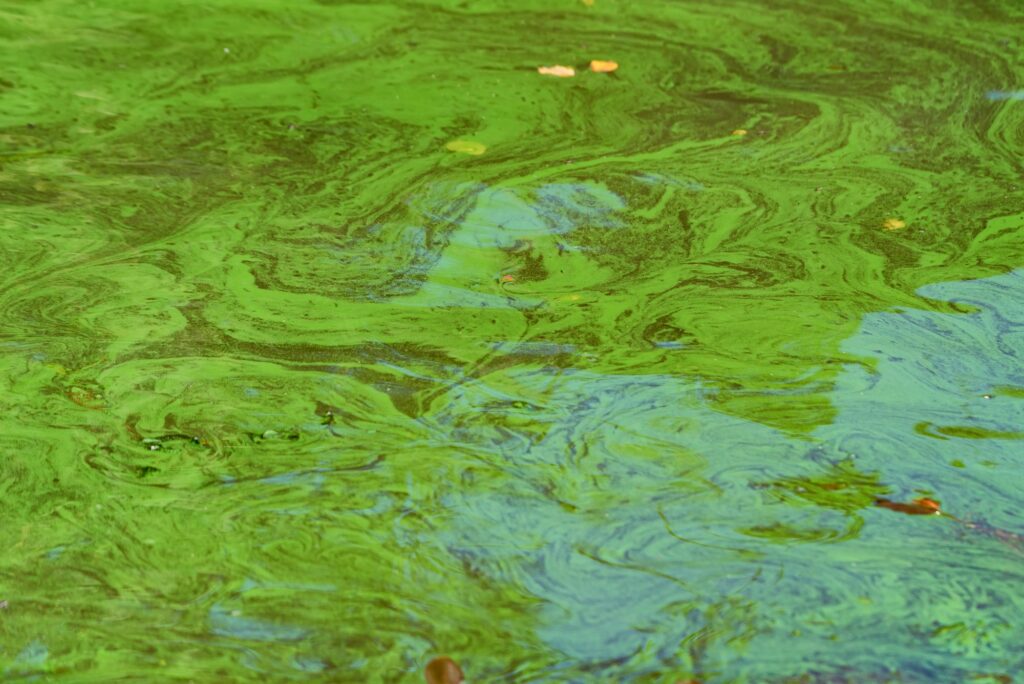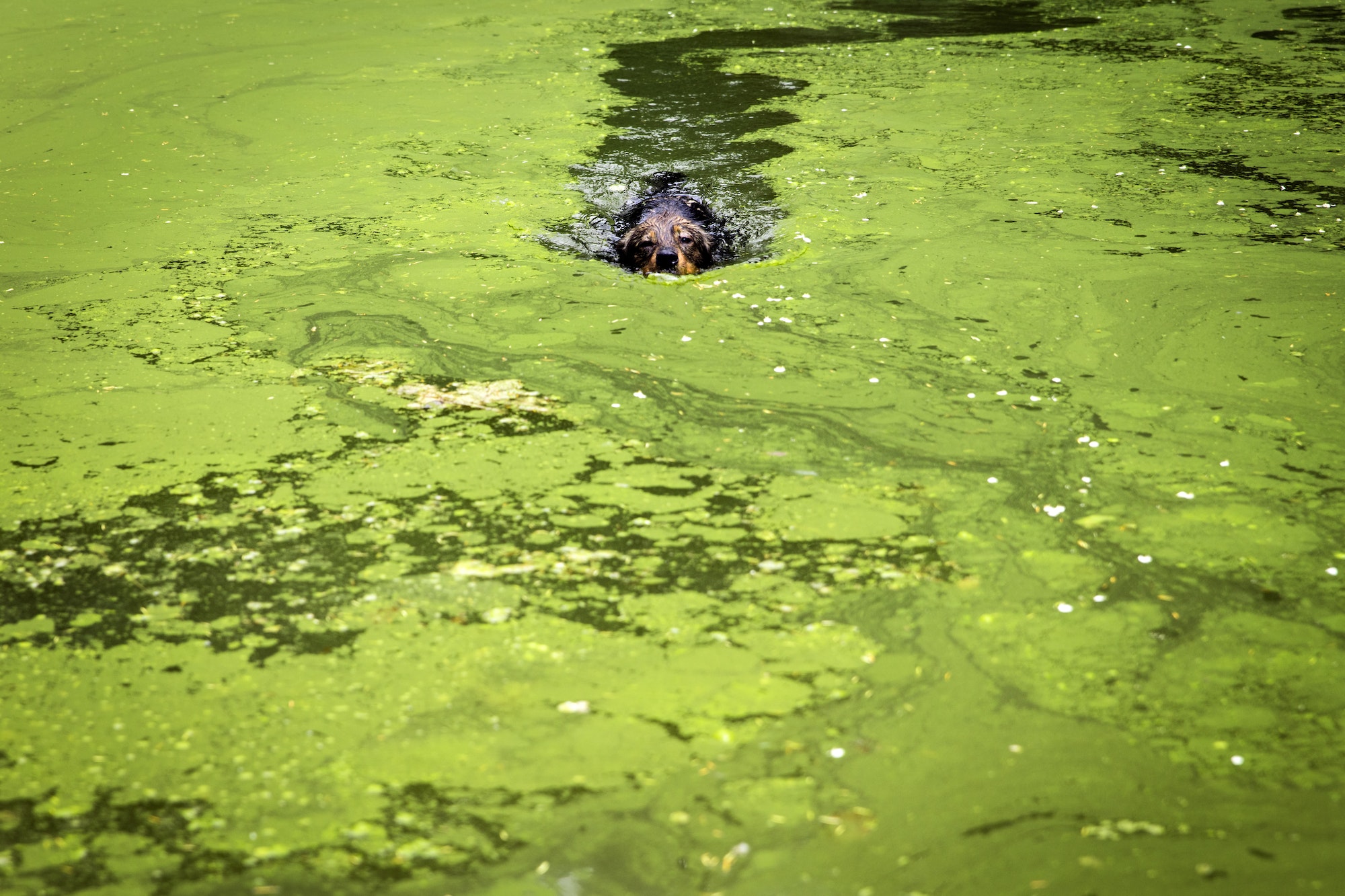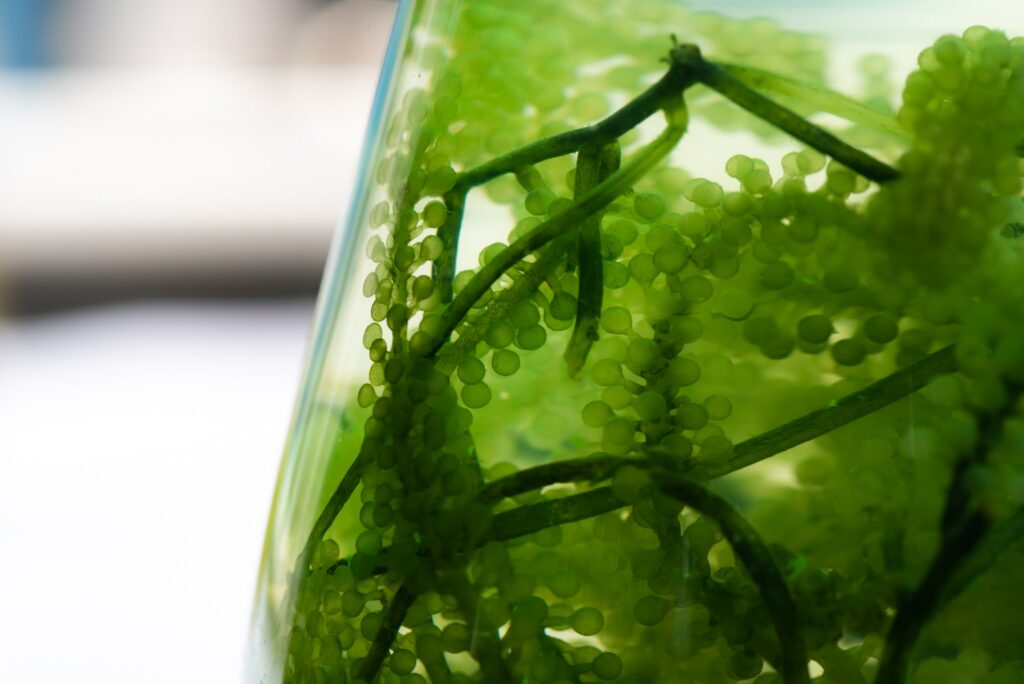Algae is a common problem in lakes and ponds, but it doesn’t have to be a problem. In fact, with the right tips and tricks, you can remove algae from your lake without any damage.
Let’s take a look:
How can I clean up my lake of algae?
Biological control
Biological control controls algae growth in lakes by introducing natural predators or competitors into the ecosystem. You can do this by stocking fish that eat algae, adding plants that compete with algae for nutrients, or introducing bacteria that consume algae.
Biological control is often considered the most sustainable and environmentally friendly method of controlling algae growth, as it relies on natural processes to keep the ecosystem balanced.
Mechanical control
Mechanical control is a method of controlling algae growth in lakes by physically removing the algae from the water. This can be done by skimming the water’s surface to remove floating algae or by vacuuming the algae from the bottom of the lake.
Mechanical control is often used in conjunction with other methods, such as chemical treatment or biological control, to achieve the best results.
Chemical Use
To reduce algae in a lake, add pond dye or barley straw pellets early in the spring. Lake Phosphate binders can help bind suspended particulate and clear the water. Algae can be removed using a lake rake or parachute skimmer. If harmful cyanobacteria are present, they can be removed using a lake rake or parachute skimmer.
There are numerous ways to deal with algal issues. Algae can be prevented from growing by changing the environment, such as by adding an aerator. Mechanical controls, such as adding an aerator, are only partial solutions and should be combined with other methods.
The biological intervention involves using filter fish to reduce planktonic algae. Algaecides can be used to control harmful algae blooms. Ponds and lakes are complex ecosystems, and ideal conditions for algae growth are rare.
Algae and other nuisance plants can be controlled by intervention on time and under appropriate environmental conditions. Other methods include:
Ultrasonic Algae Removal
Ultrasonic algae control uses sound waves with frequencies above 22 kHz to control the growth of algae. The ultrasonic waves cause the algae’s gas blisters to break, killing the algae.
Ultrasonic treatments are specific to the current algae species and water conditions to be effective. To ensure ultrasonic treatments are effective, it’s essential to use a specific program for each type of algae and water condition.
Ultrasonic algae control is a well-known and effective solution for controlling green and blue-green algae. It’s environmentally friendly, safe for aquatic life, and effective against large blooms.
Ultrasonic algae control can be used for small, medium, or large water bodies. Ultrasonic treatment coverage is determined by frequency selection and duration of treatment time.
Types of Algae
Chara Algae
Algae is an aquatic plant that can be used as a food source. Chara (Muskgrass, Stonewort) has many benefits, including improved water clarity and low maintenance costs. Algae can be used to create biofuel and other products.
Cyanobacteria Algae
Cyanobacteria algae are one of the most common algae found in lakes. They are often blue-green and can range in size from microscopic to large colonies.
Cyanobacteria algae are capable of producing toxins that can be harmful to humans and animals. Lake managers typically use mechanical, chemical, and biological control methods to remove cyanobacteria algae from lakes.
Green Algae
Many different types of algae can grow in a lake, but green algae are by far the most common. This type of algae gets its name from the green pigment that it uses to absorb light for photosynthesis.
Green algae can be found in nearly every aquatic habitat, from ponds and streams to lakes and oceans. While most green algae are harmless, some species can cause problems in lakes.

Yellow-Green Algae
Yellow-green algae are one of the most common algae found in lakes. They are often found near the shoreline, where they can form extensive mats.
Yellow-green algae can also be found in deeper waters, forming long, thin strands. Yellow-green algae are usually not harmful to humans or animals, but they can cause problems for lakes.
When yellow-green algae die, they sink to the bottom of the lake and decompose. This process uses up oxygen that fish and other aquatic animals need. Yellow-green algae can also make lakes smell bad.

Filamentous Algae
Filamentous algae are one of the most common types of algae found in lakes. They are long, thin, and often have a green or brown color.
Filamentous algae can overgrow and can often choke out other aquatic plants. While they are not toxic, they can create problems for swimming and fishing. Filamentous algae are most commonly controlled with chemical treatments.
Golden-Brown Algae and Diatoms
Two main types of algae can cause problems in lakes: golden-brown algae and diatoms. Golden-brown algae are typically found in shallower areas of lakes where there is more sunlight.
Diatoms are found in all areas of lakes, but they are widespread in deeper areas. They can grow to large mats that cover the surface of the water and block out light. Diatoms can also form large mats but are usually thinner and less dense than golden-brown algae.
What is the list of causes of algae blooms in lakes?
Pollution
One of the leading causes of algae blooms in lakes is pollution. Pollutants entering a lake can provide nutrients that encourage algae growth. These nutrients can come from many sources, including sewage, animal waste, fertilizers, and runoff from land. The most common pollutants that cause algae blooms are phosphorus and Nitrogen.
Excess Nutrients
Excess nutrients can cause algae to grow in lakes, leading to water quality problems. Algae can make the water murky and smelly and deplete oxygen levels in the water, making it difficult for fish and other aquatic creatures to survive.
Water temperature
Several factors can cause algae blooms in lakes, but one of the most important is water temperature. Warmer water temperatures provide the ideal conditions for algae to grow and increase, so blooms are more likely to occur in the summer months.
Turbidity
Turbidity is one of the leading causes of algae blooms in lakes. When water is turbid, it means that there is a high concentration of suspended particles in the water. These particles can be anything from dirt and sediment to algae cells.
The more particles there are in the water, the harder it is for sunlight to penetrate. This lack of sunlight prevents photosynthesis, which is essential for the growth of aquatic plants.
Phosphorus levels
Algae blooms are caused by high levels of phosphorus in the water. Phosphorus is found in runoff from agricultural fields, lawns, and sewage treatment plants. When this water enters a lake, it can cause the growth of algae.
Heavy metals
Heavy metals are one of the leading causes of algae blooms in lakes. When these metals enter the water, they can act as nutrients for algae and promote their growth. Heavy metals can also be toxic to aquatic creatures and plants, further contributing to the problem.
pH
pH is one of the leading causes of algae blooms in lakes. When the pH is too high, it allows for excessive algae growth. This can be caused by several things, including runoff from fertilizers and other chemicals, sewage discharge, and even natural sources like decomposing leaves. Too many algae can lead to some problems, including decreased oxygen levels in the water and reduced water clarity.

How to prevent and control algae growth in lakes?
You can do several things to prevent and control algae growth in lakes. One of the most important is to maintain a healthy pH level. This can be done by avoiding runoff from fertilizers and other chemicals and monitoring the water’s pH level.
Another critical step is to control the number of nutrients in the water. This can be done by limiting the amount of fertilizer you use and by ensuring that any decomposing leaves or other organic matter are removed from the lake.
You can also take steps to encourage the growth of beneficial bacteria in the lake. These bacteria will help break down organic matter and prevent algae growth.
Finally, you can use physical barriers to prevent algae from spreading. This can include installing a screen over the lake or using a floating cover.

FAQs
What are algae?
Algae is a microscopic, unicellular protist that forms the base of the food chain. Algae can be found on the bottom of ponds or lakes before it floats to the top. Algae has a musky smell and can be bright or dark green.
Algae is a small but beneficial plant found in ponds and lakes. The three most common types of algae are Chara algae, filamentous algae, and pond scum. Algae can be harmful if it accumulates on the surface of a pond or lake.
Algae is planktonic and turns the water into a pea soup color. Algae can reduce the levels of oxygen in water, which can kill fish. Multiple treatments are necessary to prevent this from happening.
What causes algae blooms?
Algae blooms are floating masses of algae that can harm the environment and human health. Algal blooms are caused by high water temperatures, exposure to sunlight or warmer weather, and water movement, which discourages algae growth.
Algae blooms can snowball in warm weather, especially when stagnant water is present. Algal blooms can be discouraged by the flow of water and the presence of nutrients. Sources of nutrients that can cause algae growth include Nitrogen and phosphorus.
How do algae affect the environment?
Algae can adversely impact water quality by decreasing oxygen levels, releasing Nitrogen into the water, and causing fish to kill. Algae can cause water to turn green, yellow, brown, or red. Algae can release nutrients into the water, which can cause ecosystem damage.
Algae can also accelerate the eutrophication process, which releases stored nutrients and increases the risk of irreversible ecosystem damage.
What are the advantages and disadvantages of each method?
The most environmentally friendly way to remove algae is to use circulating water systems. These systems keep the water moving, which prevents algae from settling and growing.
You can use a pond vacuum to remove the algae if you have a small pond or lake. This handheld device sucks up the algae and deposits it into a bag. You can also use chemicals to kill the algae. However, this can harm other plants and animals in the water.
What are the long-term effects of algae removal?
Algae removal is a long-term process that should be followed by changing some of the factors that caused algae to increase in the first place.
There are many different algae removal options, each with its effects. Algae removal is most effective in the summertime when there’s plenty of sunlight and warm water.
Algal blooms can have serious environmental and health consequences, so monitoring key water quality parameters allows you to forecast dangerous blooms and observe trends. Changes in human activities and policies are necessary for long-term success with algae removal.
Is algae removal permanent?
There is no single answer to the question of whether or not algae removal is permanent. The success of any given algae removal strategy depends on several factors, including the type of algae involved, the severity of the infestation, and the environment in which the removal occurs.
In some cases, algae removal may be a temporary measure that needs to be repeated regularly. In other cases, achieving a more permanent solution may be possible.
What are the costs of algae removal?
The cost of algae removal can vary depending on the size and type of algae and the methods used to remove it. For example, manual removal is usually less expensive than chemicals or other mechanical means. The cost also varies depending on the severity of the algae problem and the amount of time it takes to remove it.
How can I prevent algae blooms in the future?
To prevent future algae blooms in your lake, you will need to take some proactive measures. First, you should test the water quality regularly and take steps to address any imbalances.
You should also create a buffer zone around the lake to help keep pollutants out. Additionally, you can stock the lake with algae-eating fish or use aquatic plants to compete with the algae for nutrients.

